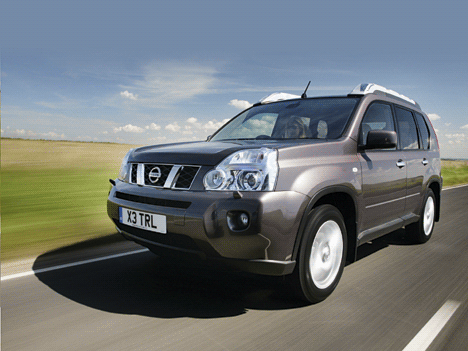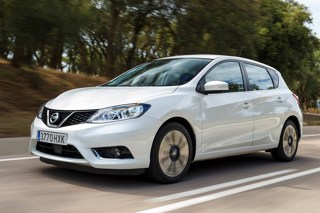Review
Nissan’s All-Mode 4x4 system is standard. It operates in front-wheel drive and, unless manually selected, transfers to four-wheel drive mode automatically only when losing traction, Mid-range Sport and top-spec Aventura variants also incorporate ESP, hill start and hill descent control as a system called All-Mode 4x4-i, which will get owners out of many sticky situations when off-road.
Based on the same platform as Qashqai, X-Trail is 175mm longer than its predecessor which allows for a bigger boot. In addition, a sliding drawer in the boot floor can be removed to increase the boot’s depth for large items. Luggage capacity is 603 litres, 193 litres more than the old model. And, Nissan says in response to original X-Trail owners, the plastic floor is easily cleanable.
Due to the success of the old model, Nissan has played it relatively safe with X-Trail’s appearance.
The original, angular bodywork has been softened slightly, but not enough to offend existing customers who preferred original X-Trail’s ruggedness to the softness of the old Land Rover Freelander.
Three trim levels are offered: Trek, Sport and Aventura. Customers in this segment expect decent standards of specification, so even the Trek’s basic equipment includes alloys, roof rails, electric windows and mirrors, climate control and Bluetooth phone compatibility.
Sport adds privacy glass, sunroof, cruise control, CD-changer, and Aventura is comprehensively equipped, adding heated leather seats, keyless start and folding mirrors.
Sport and Aventura can be further enhanced with Expedition or Extreme upgrades, which respectively add sat-nav and parking sensors, or deeper roof rails with integral lights.
Of the four engines offered, only the 2.5-litre petrol is carried over from old X-Trail, albeit after some improvements in efficiency. The entry-priced variant gets a 2.0-litre petrol. A 2.0-litre turbodiesel from the Qashqai is offered in two forms: 150bhp and intercooled 172bhp.
Nissan expects the 150bhp turbodiesel to account for up to 70% of X-Trail’s 7,500 unit target for 2008, its first full year on sale. Around 40% of those sales will be with manual transmission, according to a Nissan spokeswoman.
With the greater comfort, convenience and practicality offered by the new generation vehicle, and Nissan’s bombproof reputation in the SUV sector, dealers should be confident of selling at decent margins.

Behind the wheel
The original X-Trail accomplished itself very well as an on-road 4x4, with car-like handling and comfort that left behind rivals like the Freelander. The new model has taken this challenge further. Smart electronics and revised suspension give X-Trail decent road-holding and real all-terrain confidence. On tarmac, body roll is kept well in check, but the chassis still has plenty of movement to tackle deep ruts and steep declines when venturing into the wild.
Dealers will need off-road facilities to demonstrate X-Trail’s uphill start support and downhill descent control programs, both of which proved their worth on our test course. The control provided is impressive.
We tested a 2.0-litre 150bhp turbodiesel with six-speed automatic transmission. It’s a solid performer, with reasonable pace, smooth gearchanges and urgent kickdown when demanded.
Price: £18,795 - £26,720
Engines: 2.0 petrol: 140bhp, 2.5 petrol: 166bhp, 2.0 diesel: 150bhp, 2.0 diesel: 172bhp
Performance: 0-62mph 9.8-11.2sec; top speed: 114-124mph
Transmission: 6sp manual, CVT, 6sp automatic
Efficiency: 29.4-39.8mpg; 198-223g/km CO2
CAP RV: 45-50%
Rivals: Land Rover Freelander, Toyota Rav4
Strengths: Well equipped, stylish, well mannered
Weaknesses: Premium price
Factsheet
No information available.














